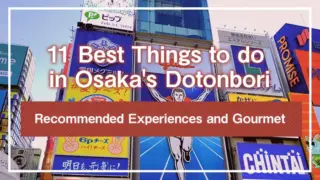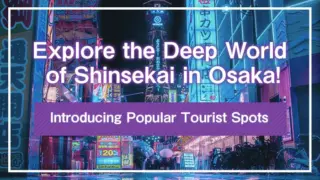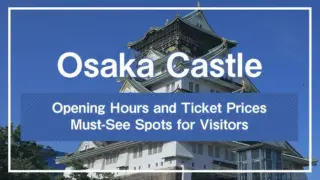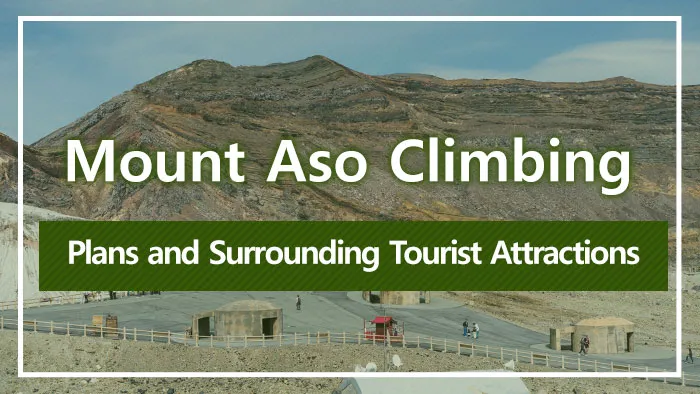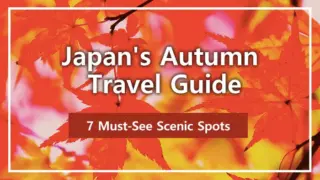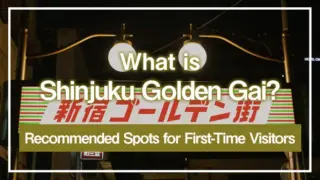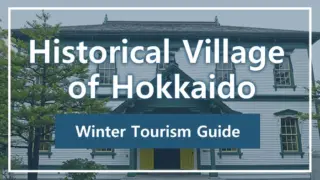Mount Aso in Kumamoto Prefecture is an active volcano with one of the world’s largest calderas. With its dynamic crater and expansive grasslands, this magnificent natural wonder attracts many visitors for climbing and hiking. The area features trails of varying difficulty levels, from beginner-friendly walking paths to serious mountain traverse routes.
This article provides detailed explanations of Mount Aso’s climbing routes, necessary equipment and precautions for preparation, and access methods. Whether you want to climb Mount Aso or learn about surrounding tourist attractions, please take a look.
1. What is Mount Aso? Explaining Its Appeal
Mount Aso is an active volcano that spreads across the Aso region of Kumamoto Prefecture, one of Japan’s most spectacular natural landmarks. The massive caldera, with a diameter of approximately 25km and circumference exceeding 100km, is considered one of the world’s largest. This unique region has towns and railways within the caldera. The Aso Five Peaks (Mount Taka, Mount Naka, Mount Neko, Mount Kishima, and Mount Eboshi) are the symbolic mountains of Aso, creating magnificent landscapes together with the outer rim mountains.
Among these, Mount Naka continues active volcanic activity, and when conditions allow crater viewing, visitors can experience the rare opportunity to observe volcanic fumes up close. The ability to safely experience nature’s power while being mindful of volcanic gases and access restrictions is one of Mount Aso’s great attractions. This land, symbolizing Kumamoto, “the Land of Fire,” is historically and geologically significant, providing visitors with overwhelming natural beauty on a grand scale.
1-1. Access Methods to Mount Aso
Access to Mount Aso is available through multiple methods including air, rail, and car, with relatively convenient tourist infrastructure. The most convenient option is using the bus from “Aso Kumamoto Airport (Kumamoto Airport),” where you can take the direct “Asosanjo Line” bus to reach “Asosanjo Terminal” in approximately 1 hour and 20 minutes.
For rail access, buses run from JR Aso Station toward Mount Aso, accessible to the mountain terminal via Kusasenri. Buses operate every 1-2 hours, and from the terminal to the crater, you can use a shuttle bus (700 yen one way) or walk (approximately 30-40 minutes).
When visiting by car, you can drive to parking areas near the crater, but the road near the crater is toll-based (1,000 yen round trip), so check in advance. Depending on volcanic activity, access may be restricted, so checking the latest information before visiting is essential.
2. Mount Aso Climbing and Hiking Routes
Mount Aso features numerous climbing and hiking routes where you can enjoy the dynamic landscapes unique to volcanic terrain. From beginner-friendly walking paths to challenging mountain routes, there’s great variety. Below are four representative routes.
2-1. Walking Trail Route (Mount Kishima)
Mount Kishima (elevation 1,326m) is a small volcano beloved as an introductory course for Aso climbing.The walking trail route starting from the Kusasenri parking area is largely paved and well-maintained enough to climb in sneakers. The path to the mid-slope is gentle, with small steps near the summit. At the top, you can walk around the crater rim and enjoy spectacular views of Mount Naka and Mount Taka of the Aso Five Peaks, the surrounding crater remains, and outer rim mountains.
The estimated climbing time is about 35 minutes up and 25 minutes down, relatively short and suitable for beginners and tourists. The Kusasenri parking area at the trailhead has shops, visitor centers, and public restrooms, making it easy to rest and prepare. Bus access from Aso Station is also possible, making accessibility one of its attractions.
2-2. West Route/East Route (Mount Eboshi)
Mount Eboshi (elevation 1,337m) offers circular routes from Kusasenri with west and east route options. The trail through grasslands features moderately graded, well-maintained dirt paths suitable for beginning climbers.
The estimated time is about 60 minutes up and 55 minutes down for the west route, and about 65 minutes up and 50 minutes down for the east route. From the summit, you can see panoramic views of Kusasenri, the Mount Naka crater, the Ariake Sea, and Mount Unzen. In May, you can enjoy blooming Miyama Kirishima. The Kusasenri parking area, bus stops, shops, and restrooms support comfortable climbing. Low-cut hiking boots or higher are recommended.
2-3. Sunasenrigahama Route (Mount Taka/Mount Naka)
The route through Sunasenrigahama, covered in volcanic ash, features the desolate landscapes unique to Aso, with scenery reminiscent of Mars or the moon. The views of Mount Naka’s crater, emerald green hot water pools, and rising volcanic fumes truly represent “a living volcano.” The route has two options: via boardwalk and via Mount Sara, both accessible from the Kobochu trailhead.
Mount Taka requires about 2.5 hours one way via Mount Naka. Since the route includes sandy areas, rocky sections, and steep climbs, bringing hiking boots, helmets, and goggles is recommended. Access restrictions may apply due to volcanic activity, so check the latest information before departure. Parking areas, shops, and restrooms are available for safe climbing preparation.
2-4. Hakoishi Tsurui Ridge Route (Mount Neko, East Peak)
The Hakoishi Tsurui Ridge Route is a somewhat challenging course within Mount Aso, offering varied climbing experiences. The first half features gentle ridge paths through grasslands with gradual slopes and open views, but the middle section enters forested areas with increasing difficulty. There are steep climbing sections with ropes and ladders, and some areas have unstable footing due to erosion.
The course time is about 105 minutes up and 75 minutes down, with summit views of the sharp rock peak Mount Tengu and panoramic views of the Aso Five Peaks. Public transportation is not available, requiring car access. There are no nearby restrooms or shops, so prepare adequate equipment and water supplies before departure. Hiking boots are mandatory.
3. Necessary Preparations for Mount Aso Climbing
Mount Aso has significant elevation differences and terrain changes, and being an active volcano requires thorough preparation for safe climbing enjoyment. Below we explain appropriate equipment, items, planning methods, and the importance of mountain insurance for emergencies.
3-1. Equipment (Clothing and Items)
Mount Aso climbing involves many rocky areas and steep slopes unique to volcanic terrain, requiring solid equipment preparation. Necessary equipment varies by trail conditions and seasons, so preparation according to route and weather is important. Below is a summary of basic equipment and seasonal/route-specific needs.
| Equipment Category | Essential Items |
|---|---|
| Clothing | Trekking shoes, breathable athletic wear, rain gear, hat |
| Items | Backpack, mobile phone, map, trash bags, portable toilet, first aid supplies, water bottle, emergency food, headlamp |
| Volcanic Area | Helmet, goggles, wet towel (for volcanic ash/gas protection) |
| Winter | Warm clothing, waterproof jacket, crampons or chain spikes, gloves, trekking poles |
| Useful Items | Whistle, mobile battery, insect repellent, sunscreen, compass |
While paved routes like Mount Kishima can be walked in sneakers, volcanic areas like Mount Taka and Mount Naka require serious climbing equipment. For safe and comfortable climbing, choose equipment considering your fitness level and weather conditions.
3-2. Climbing Plans and Registration
For Mount Aso climbing, establishing solid climbing plans and submitting climbing registration is important.Climbing registration not only heightens climbers’ safety awareness but also provides crucial information for prompt search and rescue in case of emergencies.
For climbing mountains in Kumamoto Prefecture, submitting climbing registration to the Kumamoto Prefectural Police or local police stations is recommended.Multiple submission methods are available including mail, fax, internet, and smartphone apps (YAMAP), so choose the method that suits you. Submission destinations and forms can be confirmed on the Kumamoto Prefectural Police official website. Also, keep the following preparations in mind before climbing:
- Establish reasonable plans according to your fitness and experience
- Inform family or acquaintances of climbing routes and planned descent times
- Check weather information and revise plans if bad weather is expected
3-3. Mountain Insurance
When climbing mountainous areas like Mount Aso, we strongly recommend purchasing mountain insurance (climbing insurance) for emergencies.Mountain insurance covers expensive search and rescue costs during emergencies, injuries during climbing, and liability accidents.
Coverage includes search and rescue expenses, hospitalization/outpatient/surgery costs, death and disability benefits, personal belongings damage, and personal liability, typically set higher than leisure insurance. Coverage types include annual contracts and single-trip contracts convenient for day hiking, selectable based on climbing frequency and risk level.
- Annual contract type: approximately 4,000-30,000 yen
- Single-trip contract type: approximately 500-1,000 yen
Since Mount Aso is a volcanic area susceptible to weather and terrain influences, insurance consideration is important even for beginner light climbing. Insurance coverage and conditions vary by company, so compare and consider insurance matching your climbing style for safe climbing enjoyment.
4. Precautions When Climbing Mount Aso
Mount Aso is an active volcano that continues its activity, making natural disaster preparedness important during climbing. To safely enjoy climbing, understand the effects of volcanic eruptions and gases beforehand and act based on the latest information.
Below are precautions to confirm before climbing.
4-1. Be Aware of Volcanic Eruptions
Around Mount Aso, eruption possibilities exist due to volcanic activity, requiring special caution near crater areas. Before climbing, always check volcanic warnings and access regulations issued by the Japan Meteorological Agency, prioritizing safety in your decisions. If you notice unusual signs like volcanic fumes or ground rumbling, immediately descend and evacuate.
For emergencies, carry helmets, goggles, and masks (or wet towels) for protection against volcanic rocks and ash. Since volcanic gases tend to accumulate in low areas, avoid approaching depressions and valleys. Also, bring mobile phones and spare batteries for emergency information gathering.
4-2. Be Careful of Inhaling Volcanic Gases
Around the Mount Naka crater, toxic volcanic gases (such as sulfur dioxide) are generated, posing health risks. People with asthma, bronchial or heart conditions, or those feeling unwell are strictly restricted from entering crater areas due to life-threatening dangers, so refrain from climbing altogether.
Volcanic gases can accumulate in unexpected places depending on wind direction and terrain, with route regulations implemented according to conditions. Always follow local guidance, crater monitoring staff instructions, and announcements.
If you experience headaches, nausea, breathing difficulties, or other physical symptoms during climbing, immediately move to a safe location and descend if necessary. Checking your health condition beforehand and establishing reasonable climbing plans is essential.
5. Tourist Spots Around Mount Aso
After enjoying Mount Aso climbing and hiking, be sure to visit the surrounding tourist spots. Unique landscapes created by volcanic terrain and historical and cultural sites are scattered throughout the area.
Below are recommended tourist spots to visit when coming to Mount Aso.
5-1. Sunasenrigahama
Sunasenrigahama is a former crater site located southeast of the Mount Aso Naka crater. With almost no vegetation in the surrounding area, rough rock surfaces and black, dry volcanic ash-covered sandy ground spread across the landscape. Volcanic bombs scattered from eruptions dot the area, combined with exposed lava mountainsides, creating a unique landscape that feels like standing on an alien planet.
Wooden walkways are installed for safe scenic enjoyment while walking. It’s popular as an entrance to climbing routes to Mount Naka and Mount Taka of the Aso Five Peaks, where you can experience nature’s magnificent dynamism. Note that when the eruption alert level is raised to 2 or higher, entry is prohibited. Check the latest information on the Aso Volcano Disaster Prevention Council’s official website.
5-2. Komezuka
Komezuka is a small volcano about 80m high formed by an eruption approximately 3,300 years ago, one of Aso’s representative scenic spots. With its smooth conical shape resembling an inverted bowl, it features a depression at the summit. Its unique beautiful form has earned designation as a national scenic spot and natural monument.
The slopes are covered entirely in grassland, showing fresh green from spring to summer, golden susuki grass in autumn, and snow-covered beauty in winter, displaying different expressions through the seasons. In contrast to the surrounding rough volcanic landscape, its soft, gentle mountain form is attractive. While general entry is prohibited, you can enjoy its appearance from the surrounding roads, recommended for incorporating into driving or sightseeing routes.
5-3. Chojugaoka Park
Chojugaoka Park is a spot where nature and history harmonize, located on the slope from Aso City Kario district toward the Northern Outer Rim Mountains. This road was once called the “Grass Road,” used as a living road for farmers leading cattle to pastures. The park was established by the local senior citizens’ association to preserve this memory for future generations.
From late April to early May, it’s known as a famous spot for blooming azaleas,with trees planted by about 200 households in the community bringing one sapling each in the 1960s still maintaining their beautiful appearance today. The same district is also famous for the grassland art called “Kario no Ogi” (Kario Fan), with the fan-shaped pattern appearing on the Northern Outer Rim Mountains from summer to winter maintained by community volunteer grass cutting.
5-4. Kusasenrigahama
Kusasenrigahama is a vast grassland of approximately 785,000 square meters spreading at the foot of Mount Naka, one of the Aso Five Peaks, creating magnificent natural beauty together with ponds formed by collected rainwater.The peaceful landscape of grazing horses and cattle contrasts beautifully with the smoking Mount Naka, making it a particularly popular spot within Aso Geopark.
The seasonal scenery is also attractive, turning green in summer and transforming into a silver world in winter. You can enjoy activities like horse riding on the grassland while leisurely experiencing nature.Note that you should not approach grazing horses and avoid sudden movements or feeding.
5-5. Aso Volcano Museum
The Aso Volcano Museum, adjacent to Kusasenrigahama, is a facility where you can comprehensively learn about Mount Aso’s formation, volcanic activity, the regional natural environment, and people’s lives. The museum introduces the volcano’s approximately 300,000-year history through dynamic models and videos. Live camera footage from two cameras installed at the Mount Naka crater is displayed on giant screens, allowing real-time observation of the smoking crater.
The “Crater Camera Experience” features an interactive corner where you can actually operate cameras for immersive experiences. The 3rd floor Multi Hall uses a 170-degree ultra-wide screen to show films introducing the lives and nature of Aso people living with volcanoes, making it a popular spot combining tourism and learning.
5-6. Aso Shrine
Aso Shrine is an ancient shrine with approximately 2,300 years of history, enshrining Takeiwatatsu-no-Mikoto (grandson of Emperor Jinmu) and 12 family deities. As a shrine dedicated to the gods who developed Aso, it has been connected with volcano worship since ancient times and revered as the Higo Province First Shrine, gathering much faith. It’s also the head shrine of about 500 Aso Shrines nationwide.
The shrine buildings were rebuilt in the late Edo period through donations from the Kumamoto Domain, with six buildings including the shrine hall and tower gate designated as Important Cultural Properties. The tower gate is particularly renowned as one of Kyushu’s largest and called one of “Japan’s Three Great Tower Gates.”
Aso Shrine continues rice cultivation-related festivals such as the spring “Tasakuri Matsuri (Fire Swinging Ritual),” summer “Onda Matsuri,” and autumn “Tajitsu Matsuri,” designated as Important Intangible Folk Cultural Properties. Note that while the shrine suffered severe damage in the 2016 Kumamoto Earthquake, restoration of the major shrine buildings was completed in December 2023, once again welcoming many worshippers.
Conclusion
Mount Aso is an active volcano in Kumamoto Prefecture with one of the world’s largest calderas, featuring magnificent landscapes centered on the Aso Five Peaks. Mount Naka allows close observation of active volcanic activity. Access is about 1 hour and 20 minutes by bus from Kumamoto Airport, with bus service also available from JR Aso Station. Climbing routes range from beginner-friendly Mount Kishima to the volcanic terrain-focused Sunasenrigahama Route and challenging Mount Neko for experienced hikers.
When climbing, be careful of volcanic gases and eruptions, carrying helmets and goggles. Check volcanic warnings beforehand, and consider climbing registration and mountain insurance important. The surrounding areas feature abundant attractions including Kusasenrigahama, Komezuka, and Aso Shrine, so definitely enjoy the surrounding tourist spots when visiting.
*This article was created based on information as of June 2025.




